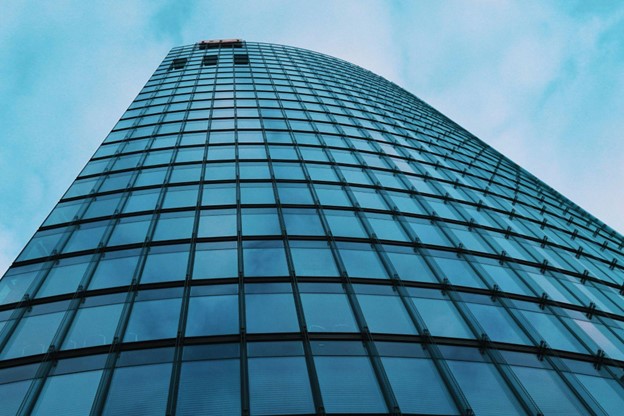Mastering Commercial Glass Installations: A Comprehensive Guide

High-quality commercial glass installations have become pivotal in enhancing commercial properties’ functionality and aesthetic appeal. From sleek office buildings to vibrant retail spaces, the use of glass elevates visual appeal and contributes to energy efficiency and overall building performance.
For glass installers and commercial property owners alike, grasping the complexities of commercial glass installations is essential. This guide is intended to provide professionals with a comprehensive resource covering every aspect of commercial glass installations. From selecting the right type of glass to understanding the installation process and maintenance requirements, this guide ensures that readers have the knowledge needed to execute top-notch installations.
Additionally, we will explore the latest advancements in glass technology, such as smart glass and energy-efficient glazing, to keep you at the forefront of industry trends.
By the end of this guide, you’ll have a solid foundation in the principles and practices of commercial glass installations, enabling you to make informed decisions and achieve superior results in your projects.
Understanding Commercial Glass Installations
Types of Commercial Glass
Commercial glass comes in various types, each designed to meet specific needs and applications. Here are some of the most common types:
Tempered Glass
Tempered glass is heat-treated to increase its strength and durability. It’s used in areas where safety and strength are paramount, such as storefronts and high-traffic entrances. Store entrances often use tempered glass to withstand impact without shattering into sharp pieces.
Laminated Glass
Laminated glass consists of layers of glass bonded together with an interlayer, usually made of polyvinyl butyral (PVB). This type of glass is often used for its safety and soundproofing properties, making it ideal for office partitions and conference rooms. When broken, the interlayer holds the glass shards in place, reducing the risk of injury.
Insulated Glass Units (IGUs)
IGUs are multi-pane glass units separated by a spacer and sealed to create an air or gas-filled cavity. These units provide excellent thermal insulation and are commonly used in exterior windows and facades. For instance, IGUs help maintain indoor temperature and reduce energy costs, making them perfect for energy-efficient buildings.
Low-E Glass
Low-emissivity (Low-E) glass is coated with a thin metallic layer that reflects infrared light, keeping interiors cooler in the summer and warmer in the winter. This type of glass is often chosen for its energy-saving properties and is frequently installed in large windows and glass facades.
Common Applications in Commercial Buildings
Commercial glass installations are versatile and can be found in various building parts. Here are some common applications:
- Storefronts and Entrances: Glass storefronts create an inviting and modern appearance, enhancing curb appeal and allowing natural light to flood the interior. They also offer a clear view of merchandise, attracting potential customers.
- Office Partitions: Glass partitions in offices provide an open and collaborative environment while maintaining privacy and sound control. They also allow light to penetrate deeper into the building, creating a brighter workspace.
- Curtain Walls: Curtain walls are non-structural, and the exterior facades are made of glass and metal. They offer a sleek, contemporary look and can cover entire building exteriors. These walls are designed to protect against weather elements and improve the overall aesthetic.
- Skylights: Skylights are installed in the roof to allow natural light to enter the interior spaces. They are particularly beneficial in large commercial spaces like shopping malls, atriums, and warehouses, reducing the need for artificial lighting during the day.
Benefits of Professional Installation Services
Opting for professional installation services for commercial glass comes with several advantages:
Expertise and Experience
Professional installers have the knowledge and experience to handle complex installations safely and efficiently. They understand the technical specifications and building codes, ensuring compliance and longevity.
Quality Assurance
Professionals use high-quality materials and advanced installation techniques, resulting in durable and reliable installations. This reduces the likelihood of issues such as leaks, drafts, or structural failures.
Safety Compliance
Safety is a top priority in commercial glass installations. Professionals adhere to safety standards and regulations, minimizing risks during and after installation. For example, they ensure that glass installations in high-rise buildings are securely anchored to prevent accidents.
Warranty and Support
Reputable installation companies offer warranties and post-installation support, giving property owners peace of mind. In case of any issues, they provide prompt repairs or replacements.
Pre-Installation Preparation
Before any glass installation project begins, thorough preparation is essential. This preparation not only ensures a smooth installation process but also guarantees the safety and longevity of the glass installations.
Site Assessment and Measurements
The first step is conducting a detailed site assessment. Glaziers Consulting evaluates the structural integrity of the building where the glass will be installed, checking for any potential obstacles that could affect the installation process.
Accurate measurements are taken to ensure that the glass fits perfectly. For instance, precise dimensions of window openings are recorded to avoid gaps or misalignments.
Choosing the Right Type of Glass for Specific Applications
Choosing the appropriate type of glass is crucial. Different applications require different types of glass. Tempered glass, for example, is often used in areas prone to impact due to its high strength and shatter-resistance properties.
Commercial glass installers evaluate each project’s specific needs to recommend the best glass option. For instance, insulated glass units (IGUs) are preferred for energy efficiency in office buildings.
Building Codes and Regulations Compliance
Compliance with building codes and regulations is non-negotiable in commercial glass installations. Commercial glass installers such as Glaziers Consulting stay updated with the latest industry standards to ensure all installations meet legal requirements.
This includes adhering to safety regulations, fire codes, and energy efficiency standards. For example, certain regions may have specific fire-rated glass requirements for safety.
Installation Process
The installation process involves several steps, each critical to achieving a flawless finish.
Step-by-Step Guide to Commercial Glass Installation
- Preparation – Before starting, the area is cleaned, and necessary tools are prepared.
- Positioning – The glass is carefully positioned to ensure it aligns perfectly with the frame.
- Fixing – Using specialized adhesives and mechanical fasteners, the glass is securely fixed.
- Sealing – Seals and gaskets are applied to prevent air and water infiltration.
Safety Measures and Best Practices
Safety is paramount in glass installations. Workers wear personal protective equipment (PPE), including gloves and safety glasses. Additionally, Glaziers Consulting follows best practices, such as double-checking measurements and using scaffolding for high installations, to prevent accidents.
Specialty Glass Installations
Specialty glass installations cater to unique architectural designs and specific functional requirements.
Exploring Specialty Glass Options
There are various specialty glass options available, as already discussed. Here is a recap:
- Tempered Glass – Known for its strength and safety features, it is ideal for high-traffic areas.
- Laminated Glass – Consists of two layers of glass with an interlayer, providing enhanced security and sound insulation.
- Insulated Glass Units (IGUs) – Comprise two or more glass panes separated by a spacer, providing excellent thermal insulation.
Considerations for Unique Architectural Designs
When dealing with unique architectural designs, Glaziers Consulting collaborates closely with architects to understand their vision. For example, curved glass installations require custom fabrication and precise measurements to achieve the desired aesthetic.
Customization and Design Possibilities
Specialty glass offers vast customization options. From etched designs to colored tints, Glaziers Consulting offers a range of possibilities to meet the client’s aesthetic preferences. For instance, frosted glass can add privacy without compromising light transmission.
Quality Assurance and Testing
Ensuring the quality and durability of glass installations is a priority.
- Importance of Quality Control in Glass Installations: Quality control involves rigorous inspection at every stage of the installation process. Glaziers Consulting ensures that all glass panels meet the required standards before installation, including checking for defects such as cracks or imperfections.
- Testing Procedures for Commercial Glass: Testing procedures include impact tests for tempered glass and sound insulation tests for laminated glass. These tests ensure that the glass meets safety and performance standards.
- Ensuring Durability and Longevity of Installations: To ensure the longevity of installations, Glaziers Consulting uses high-quality materials and follows best practices in sealing and fixing. Regular maintenance checks are recommended to address any issues promptly.
Energy Efficiency and Sustainability
Impact of Glass Installations on Energy Consumption
Modern commercial glass installations play a pivotal role in enhancing energy efficiency within buildings. Properly installed insulated glass units (IGUs) are designed to minimize heat transfer, reducing energy consumption. This contributes to lower heating and cooling costs, ultimately improving the overall energy efficiency of the building.
Strategies for Enhancing Energy Efficiency
There are several strategies that can be employed to enhance the energy efficiency of commercial glass installations:
- Low-Emissivity (Low-E) Coatings: Low-E coatings are thin layers applied to glass surfaces to reflect infrared heat while allowing visible light to pass through. This helps maintain a comfortable indoor temperature by reducing heat loss during winter and minimizing heat gain during summer.
- Double or Triple Glazing: Incorporating double or triple glazing involves using multiple glass panes separated by insulating spacers. This design improves thermal insulation by creating an air or gas-filled space between the panes, reducing heat transfer and enhancing energy efficiency.
- Thermal Breaks: Thermal breaks are materials with low thermal conductivity inserted between metal frames or panels. They act as barriers to heat flow, preventing heat transfer and improving the insulation properties of the glass installation.
Sustainable Glass Options and Green Building Practices
Sustainability is a key consideration in modern construction, and commercial glass installations are no exception. Sustainable glass options and green building practices include:
- Recycled Glass: Using recycled glass in installations reduces the demand for raw materials and minimizes environmental impact. Recycled glass can be incorporated into new glass products without compromising quality.
- Energy-Efficient Coatings: In addition to Low-E coatings, other energy-efficient coatings are available that enhance the thermal performance of glass. These coatings can reflect, absorb, or transmit specific wavelengths of light, contributing to energy savings.
- Green Building Certifications: Green building certifications, such as Leadership in Energy and Environmental Design (LEED), demonstrate a commitment to sustainability. These certifications often require the use of energy-efficient and environmentally friendly materials, including glass.
Industry Insights and Expert Advice
The Growing Demand for Glass
In recent years, the demand for glass in commercial buildings has surged. This trend is largely driven by the material’s ability to provide natural light, energy efficiency, and a sleek, contemporary look. Integrating glass into commercial property design requires not only aesthetic consideration but also a deep understanding of its functional benefits.
Recommendations for Commercial Property Owners and Developers
The successful integration of glass into commercial properties hinges on strategic planning and execution. Here are some recommendations:
- Collaborate with Professionals: Engage with architects, engineers, and experienced glass installation contractors early in the planning phase. Their collective expertise ensures that the glass installations meet both aesthetic and regulatory standards.
- Prioritize Quality: Invest in high-quality glass products and installation services. While this may incur higher upfront costs, it pays off in durability, safety, and energy efficiency over time.
- Consider Environmental Factors: Assess the building’s location and orientation to maximize the benefits of natural light while mitigating potential issues such as glare and heat gain. Using energy-efficient glass can significantly reduce the building’s carbon footprint.
Addressing Common Challenges in Glass Installations
Weatherproofing
Ensuring that glass installations are weatherproof is critical to prevent leaks and energy loss.
- Sealant Application: High-quality sealants, such as silicone or polyurethane, are applied around the edges of the glass panels to create a watertight barrier.
- Glazing Techniques: Different glazing techniques are employed depending on the design and requirements. For example, structural glazing involves bonding the glass to the building’s frame using a silicone sealant, enhancing aesthetics and weatherproofing.
- Testing: Post-installation, rigorous testing is conducted to check for potential leaks or structural weaknesses and ensure the installation can withstand various weather conditions.
Safety and Compliance
Adhering to safety and regulatory standards is non-negotiable in commercial glass installations.
- Regulatory Knowledge: Installers must be well-versed with local building codes and safety regulations pertaining to glass installations.
- Material Selection: Choosing the right type of glass (e.g., tempered or laminated) based on the application and safety requirements.
- Inspection and Certification: Regular inspections during and after installation ensure compliance. Obtaining necessary certifications from relevant authorities validates that the installation meets all safety standards.
Final Word
Mastering commercial glass installations involves understanding the importance of maintenance, repair, and sustainability. By following proper cleaning techniques, addressing damage promptly, and incorporating energy-efficient solutions, businesses can ensure the longevity and performance of their glass installations. Additionally, adopting sustainable practices contributes to a greener future.
Ready to elevate your commercial glass installations? Contact Glaziers Consulting for expert guidance and support in achieving optimal results.

